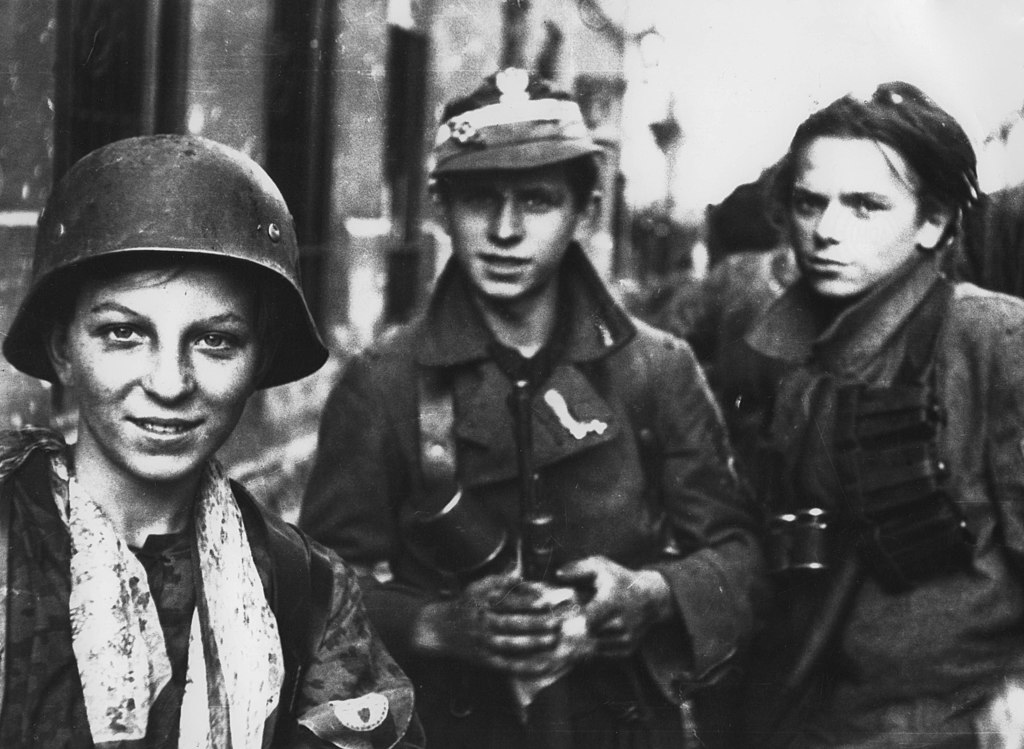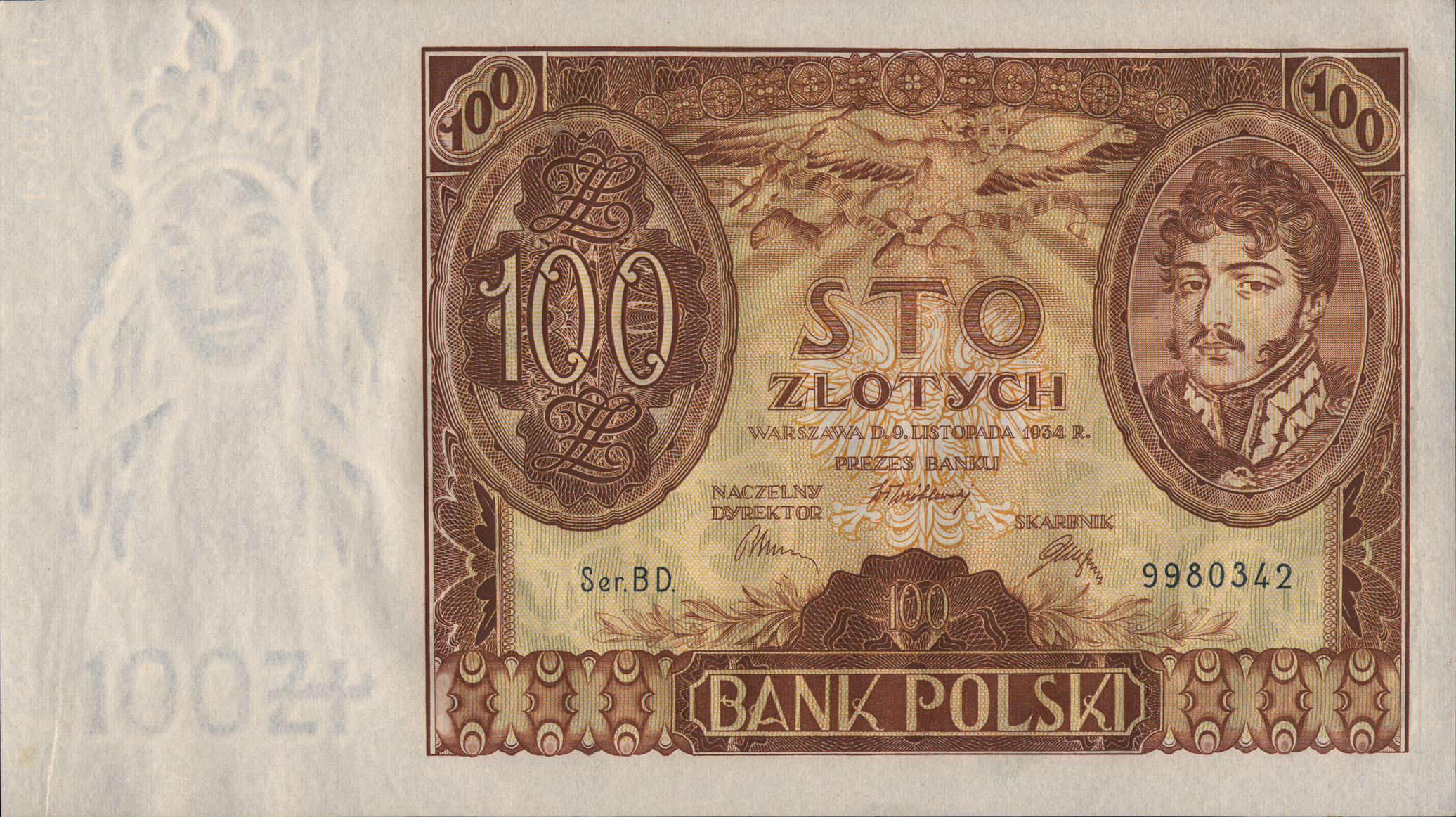The uniqueness of the Home Army is something much discussed. What was it all about? What can be considered the organisation’s greatest success? What place does it occupy in the Poles’ collective consciousness? Reflection on the subject is taken up by Dr Tomasz Łabuszewski, Head of the Branch Historical Research Office of the Institute of National Remembrance in Warsaw.
polishhistory: We are approaching 14 February, the 80th anniversary of the transformation of the Union of Armed Struggle (UAS) into the Home Army (HA), symbolically regarded as the anniversary of the creation of the latter. Was this really its ‘founding moment’?
Tomasz Łabuszewski: Certainly not. The beginnings of the HA can be traced back to the establishment of the Service for Poland’s Victory (SPV), which took place on 27 September 1939, so even before the capitulation of Warsaw. Shortly afterwards, on November 13 of the same year, the formation was renamed the UAS, from which the HA was directly derived. Thus, in 1942, the HA was not created from scratch – it was a simple continuation of organisations that had been fighting against both occupying powers since the beginning of the Second World War.
Why the need to rename the UAS as the HA? Did this step entail any changes?
Above all, it was a matter of uniting all the underground movements and organisations operating in the country into a single formation. This was to become the HA. According to the Polish authorities in exile, it was supposed to absorb all the structures of the military conspiracy existing in occupied Poland. Therefore, on 1 September 1942 President of the Republic of Poland in exile Władysław Raczkiewicz issued a decree by virtue of which the commander of the HA became the representative of the Commander-in-Chief on Polish soil, and all participants of the independence conspiracy were to submit to his orders. Two days later, the Prime Minister of the Polish government-in-exile General Władyslaw Sikorski sent a telegram to the then commander of the HA General Stefan Rowecki a.k.a. Grot informing him that he was becoming the commander of the Polish armed forces in the country.
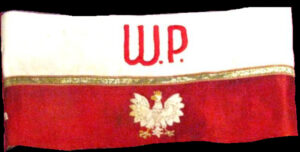
In one of the instructions General Sikorski also stressed that the HA should be ‘nationwide, supra-party and supra-state, gathering in its ranks, regardless of political and social differences, all Poles willing to fight armed struggle against the occupants in the conditions of conspiratorial work’. Was the attempt to form the HA this way successful?
Indeed, this is how General Sikorski imagined the HA. It must be remembered, however, that in fact the consolidation of the Polish armed forces began much earlier – as early as 1939, in the period of the operation of the SPV and later the UAS. It is estimated that, by 1940, around 20 conspiratorial organisations had managed to join the latter, and regular negotiations were conducted with several dozen of them. From the point of view of Polish interests, this process was necessary. If control over the resistance activities of the whole of Polish society was to be maintained, there was no other choice but to seek to unite the various underground movements into a single organisation and bring it under a single command.
This was not an easy task, was it? The conspiratorial movements operating on the territory of occupied Poland originated from different environments and political groupings, often opposing one another. Combining such groups is very difficult in a time of peace, let alone in wartime reality.
Correct. This is best illustrated by the example of two organisations – the National Military Organisation (NMO) and the Peasants’ (People’s) Battalions (PB). Both originated from political groupings – the former was the armed arm of the National Party, while the latter was formed by peasant activists. While negotiations on the merger of the NMO with the HA ended successfully in August 1942, the PB did not merge until March 1943, and only to a limited extent. There were areas where the peasants transferred only 20 percent of its personnel to the HA. The thing with the NMO was not so straightforward either as the decision to merge with the HA led to a split in its ranks – some activists reluctant to merge established the National Armed Forces (NAF) together with the Lizard Union. These, in turn, decided to merge with the HA as late as on 7 March 1944 – and not all of them, either. It is estimated that only a dozen or so percent of the NAF soldiers joined the Polish Armed Forces in Poland.
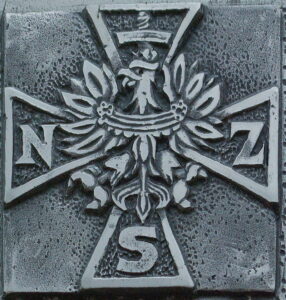
What was the reason for the reluctance of the NAF and PB to join forces with the HA?
It was mainly political reasons. Both the HA and its predecessors, the SPV and the UAS, were founded by professional officers in active service. They were therefore perceived as Sanation-camp organisations, and a significant part of political opposition activists held this very group responsible for Poland’s defeat in 1939 – hence their distrust of the HA. On top of that, there were also ambitions and political aspirations of the commanders of these units. As a result, they were able to function on their own, and often also to finance themselves, but they distanced themselves from the idea of submitting to the orders of a unified command that was different from their own. Eventually, however, most of the underground organisations found their way into the ranks of the HA and the concept of the common good prevailed.
People often talk about the uniqueness of the HA on a European or even world scale. What is its phenomenon based on? What distinguished it from other underground organisations operating in Europe at the time?
The basic distinction of the HA from other underground military organisations was that it was one of the elements of a broader conspiratorial-political project. It was not simply an underground diversionary or partisan organisation set up to fight the occupying force(s), but the armed arm of the Polish Underground State (PUS) – a superbly organised structure which covered the entire territory of the Second Polish Republic and carried out well-developed administrative, political and military activities. It was simply an element of a broader pro-state concept – hence such a broad impact on society it had.
It must be remembered that, in the case of the HA, we are talking about a kind of hastily-arranged mass movement – it was a primarily volunteer army, bringing together in its ranks both young people and those over fifty or even sixty years of age. These were people from very different backgrounds, with different skills, experience and emotional maturity. Most of the volunteers also had to be trained, to find a suitable place for them within the structures of the HA, which was undoubtedly a great challenge. But they succeeded. Estimates show that between 250 and even 380 thousand soldiers were in the ranks of this organisation at the end of the war.
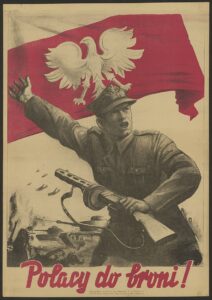
One should also note the high quality of the specialised divisions – for example, intelligence. From April 1940, there was also a combat division dedicated to the ongoing armed struggle – first as the ‘Union of Retaliation’, later as ‘Fan’, ‘Wasp’, and finally, from January 1943, as the Directorate of Diversion. The operations Czyszczenie (Cleaning), Topiel (Deep Water), Główka (Little Head), Kośba (Haymaking), or the diversionary actions on railway lines Wieniec (Wreath), Odwet kolejowy (Railway Retaliation) and Jula are the work of these soldiers. All in all, this amounts to several tens of thousands of armed acts.
Finally, it must be remembered that the HA, despite the fact that all soldiers and commanders were bound by the same orders and regulations, was not a uniform formation. Its image was largely determined by the external conditions in which it had to operate. It functioned differently in areas directly incorporated into the Third Reich, in the General Government, and in Ostland or the Reichkommissariat Ukraine. In addition, one has to remember that often it was the district commanders who gave the final shape to the organisation they led. For example, in the Novogrudok District out of 10 thousand members as many as 7,500 served in battalions of the 77th and 78th infantry regiments and the 27th cavalry regiment, in the Vilnius District in 16 brigades – 8,000 out of 12,000 sworn members, while in the Bialystok District only 2,000 out of 30,000 served in partisan units. Thus, while in the eastern borderlands of the Second Polish Republic real guerrilla battles were possible, in the Tuchola Forest or Greater Poland individual armed operations rose to the rank of a symbol of resistance.
From the headquarters in Warsaw, through the level of districts, circuits and communes – how was it possible to organise the structure of the army so perfectly while the country was under the occupation regime?
It required, above all, learning how to operate in conspiratorial conditions, which was not an easy matter. During the several years of occupation, hundreds of instructions were issued, which regulated basically all spheres of the organisation’s activity. These ranged from how to move around the city in a clandestine manner, to keeping records of members, to what to do if arrested, to the art of writing reports – political, situational, intelligence and combat ones. This required a gigantic amount of work.
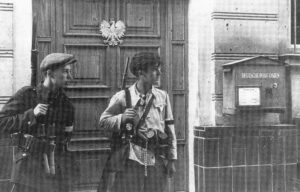
It is worth realising what kind of organisational scale we are talking about here. The vertical structure of the HA comprised as many as eight levels – from posts, through regions, districts, inspectorates, counties, sub-districts, areas, up to the Headquarters. Each of these levels was assigned specific competences and staffing, and each had its own specialised divisions, requiring appropriate people and equipment. Although it is often overlooked in stories about the HA, an enormous logistical job was done. The organisation of such efficient structures in an occupied country deserves true appreciation.
And not only within the country – the HA developed structures which operated also outside Poland, for example in Berlin or Hungary.
Yes, it is worth emphasising here that the activity of the HA was not limited to the territory of pre-war Poland. It was part of the Polish Armed Forces in the West, it was part of the Allied coalition. Although the final normalisation of its status in the coalition took place only during the Warsaw Rising, throughout its existence it played a secondary role to the allied forces. One of its most important activities was intelligence – the HA soldiers used various channels to provide the Allies with information concerning entire occupied Europe. They were extremely effective in this. One of the representatives of MI6 (Secret Intelligence Service) admitted after the war that almost half of the intelligence information concerning the areas of occupied Europe which the Allies had come from none other but the Poles.
However, this is much less talked about than military activity. Blowing up trains, the assassination attempt targeting Kutschera, the Arsenal Operation – these are mainly the actions we associate the HA with. Why? Because they are more popular in the media?
Sensational images always attract more attention, they are part of the ethos of struggle, of armed uprisings against the occupying forces. These less spectacular episodes are often forgotten, and quite wrongly – they often had a much greater impact on the course of the Second World War. The best example of this is the already mentioned intelligence. Although it is an unknown story for many, it was the specialised offensive intelligence cells of the HA, code-named Lombard, which passed on information to the Allies about the existence of a rocket base in Peenemünde on the island of Usedom. The intelligence service also discovered the German base in Blizna near Tarnów for testing V1 and V2 rockets. What is more – in 1944 the HA soldiers from Siedlce District seized an unexploded shell of such a rocket and the HA HQ specialists delivered its main fragments to the British side as part of Operation Most (Wildhorn) III. These are huge successes!
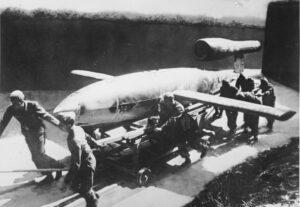
Did the Allies remember them? How was the HA perceived in the West?
We are dealing here with a very ambiguous attitude of the Allies. On the one hand, they stressed the importance of cooperation with the HA, treating it as one of the main sources of information coming from Europe. On the other hand, however, the amount of aid given to the HA was small. It received the least support of all the organisations forming the anti-German coalition. If we compare the number of equipment, weapons or logistical materials given by the Allies to allied forces until 1944, the resistance movement in France received more than ten times as much, and the communist partisans in Yugoslavia more than seventy times! The declared appreciation for the HA was definitely not accompanied by tangible help. The Allies supported the functioning of this organisation in a very reserved way, and in the end they even went so far as to betray it, handing it over to the mercy of the Soviet Union.
The Allies did not recognise the HA as a regular armed force until 30 August 1944.
It was a purely symbolic act, limited in practice only to the Warsaw insurgents. Although they too, contrary to the Geneva conventions, were later forced by the Germans to work as prisoners of war – which was after all forbidden. For HA soldiers from other areas, it did not mean any qualitative change. They continued to be murdered by the Germans on the spot, just as they had been previously by the Russians.
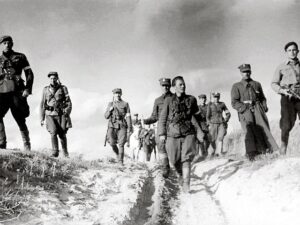
But why did the Allies delay so long in granting the HA the status of regular armed forces? After all, information about German crimes committed during the Warsaw Rising reached them much earlier.
Yes, but let us remember that it was already after the Teheran conference and it was clear to the Allied leaders that Poland would fall within the sphere of influence of Soviet Russia. Excessive involvement in Polish affairs was for them – to put it mildly – increasingly troublesome and inconvenient. Let us pay attention to how the Allies behaved in 1945 after the ‘Pruszków provocation’, as a result of which the Soviets kidnapped and transported the PUS leaders to Moscow. Apart from an official enquiry addressed to the Soviet authorities, they did not take any significant action to rescue the leaders of the allied country which had rendered them great services during the war. We are dealing here with a classic example of extreme disloyalty, not to say treason.
What was the fate of HA soldiers after the formation was disbanded?
Very differently, but in most cases they did not give up the fight. Okulicki’s order to disband the HA was dictated mainly by political and organisational reasons – this move was supposed to deprive the communist side of the possibility to argue that the HA soldiers acting against the Red Army were doing so in concert with the Germans. Although the assumption was right, it turned out to be disastrous in its consequences. The dissolution of the HA did not, in fact, bring any political benefits, quite the contrary. As a result, what was the essence of the organisation’s activity, i.e. the possibility to influence society, was lost. In this situation, collaboration with the Soviets and the communist regime ceased to be treason, and sentences passed on traitors began to be described as fratricidal fighting. Interestingly, many historians defend this schizophrenic situation to this day – while having no doubts about the rightness of more than 300,000 sentences on Poles who collaborated with the Germans.
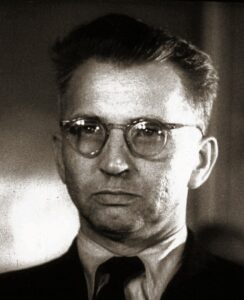
Most probably General Okulicki planned to undertake conspiratorial activities in a different form. On the same day when he decided to dissolve the HA, he issued two other orders in which he instructed the district commanders to maintain the district headquarters and the communication network. Unfortunately, he did not have time to take further action as he fell victim to the already mentioned ‘Pruszków provocation’.
However, the HA soldiers did not give up fighting – although they carried it on outside the Army’s structures.
Indeed, although in a different form. General Okulicki’s successor, Colonel Jan Rzepecki, in establishing the Delegate’s Office of the Armed Forces at Home wanted to liquidate as quickly as possible the structures of the military conspiracy, especially the active partisan units. He did not want and did not understand the motivation of the majority of his subordinates, for whom the communist regime did not mean a free Poland after all. Instead, he floated the illusion of saving the remnants of democracy and independence by cooperating with the Polish People’s Party in the first legislative Sejm elections. This concept was to be served by transforming the military organisation into a social and civic one. This is how Freedom and Independence was created.
In retrospect, we can say that it was a naive assumption, taking into account the stationing of 500,000 soldiers of the Red Army in Poland, 30,000 soldiers of the NKVD Internal Troops, as well as the terror that the Soviet Union unleashed on the Polish territories. According to the most likely estimates, the first communist decade cost Poland around 50,000 deaths on the pro-independence side, 250,000 convicted on political grounds and around 1,100,000 victims of arrests and imprisonment in camps. To this we must add around 200,000 people deported to Soviet labour camps. So for 24 million citizens the scale of repression was huge.
Communist propaganda explained this repression by the need to fight the ‘bandits’ from the HA who collaborated with the Nazis during the war. Did such slogans have the intended effect? How did Polish society feel about the post-HA partisan movement?
Despite the breakdown its uniformity, the pro-independence underground still enjoyed great support from Polish society. This is evidenced by the fact that in the summer of 1945 – in the period of the greatest development of the anti-communist conspiracy – there were about 200,000 people in its ranks, the vast majority of them coming from the HA. If there were so many of them, they must have found support among several million Poles who supported them in various ways.
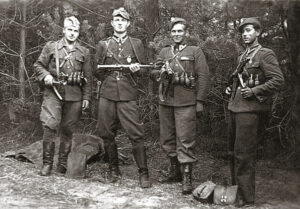
Of course, over time, these proportions changed – whether as a result of constant repression or simple war weariness. No other period in the over 1,000-year history of the Polish state has been marked in such a dramatic way. According to the 1946 census, Polish society ended the war with eleven million fewer citizens!
However, there were two moments in the post-war period, which make it possible to assess the mood of Polish society and its attitude towards the communist regime and the resistance – the popular referendum of 30 June 1946 and the election to the Legislative Assembly of 19 January 1947. In both of these votes, the communist regime was squarely defeated. Only the presence of the Soviets and falsification of the results on a gigantic scale helped it to retain power.
And how do Poles perceive the HA today? What place does it hold in our collective identity?
Today, post-communist propaganda has little chance of breaking through, except in extreme groups. However, we are dealing with another disturbing phenomenon. A rather simplified image of the HA is beginning to dominate in the public debate. Many popularisers of history present the HA as part of the Polish armed forces, but operating in normal – peaceful – conditions, translating its functioning into today’s standards. This extraction from occupation reality is a big mistake, not to say a falsification.
This army functioned in very specific – even exceptional – conditions, which must be taken into account, especially when evaluating its achievements. It was first and foremost a volunteer-based formation, made up of various, often opposing political groups and militias, and was unarmed, largely without sufficient weaponry and training for a large proportion of its soldiers. Meanwhile, its opponent was the powerful and unbeaten German army. This we must remember. All this makes the successes of the HA – not so small after all – only prove its uniqueness and phenomenon.
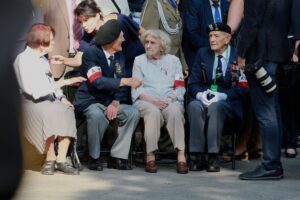
What can we consider to have been the HA’s greatest success?
Spectacular diversionary or armed operations, undertaken in spite of a considerable disproportion of forces and in exceptionally difficult operating conditions, intelligence successes, excellent organization – all this should undoubtedly be considered a great achievement of the HA and an example of an impressive mobilisation of Polish society. In my opinion, however, its greatest success is the fact that it managed to control the minds of the entire Polish society, to impose on the majority – often silent or oriented towards passive resistance – a specific pattern of behaviour towards the occupying powers, which that society respected. It succeeded in uniting the nation in a common cause. This is definitely what we can – and should – learn today from the soldiers of the Home Army.
Interviewer: Natalia Pochroń
Translation: Mikołaj Sekrecki

